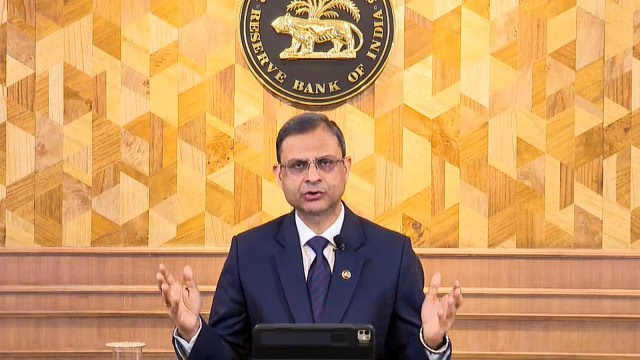RBI MPC Meeting February 2025: Repo Rate Cut by 25 BPS to 6.25%, First Reduction in 5 Years
The Reserve Bank of India’s (RBI) Monetary Policy Committee (MPC) has announced a significant policy shift by cutting the repo rate by 25 basis points to 6.25%. This marks the first rate reduction in five years, the last being in May 2020. The move aims to boost economic activity by making borrowing more affordable and stimulating investment and consumption.
Key Highlights of the RBI MPC Meeting 2025
- Repo Rate Cut: Reduced by 25 basis points to 6.25%.
- First Rate Cut Since 2020: Aims to enhance economic growth and liquidity.
- GDP Growth Projection: FY26 GDP estimated at 6.7%.
- Inflation Outlook: Retail inflation for FY26 projected at 4.2%.
- Cybersecurity Measures: New regulations introduced to curb digital fraud.
- Forex Market Policy: RBI to maintain stability and curb excessive volatility.
Why the RBI Cut the Repo Rate
The decision to lower the repo rate comes amidst a slowdown in economic growth. The GDP for FY25 is expected to grow at 6.4%, the slowest pace in four years. The government recently introduced tax cuts to boost spending, and the RBI’s latest move complements these efforts by making credit cheaper for businesses and consumers.
Impact of the Repo Rate Cut
A reduction in the repo rate leads to lower lending rates for businesses and individuals, which can:
- Reduce EMIs on home, auto, and personal loans.
- Encourage businesses to invest in expansion.
- Improve liquidity in the banking system.
- Strengthen economic growth by increasing consumer spending.
GDP Growth Projection for FY26
The RBI has projected a GDP growth of 6.7% for the financial year 2025-26. This aligns with the government’s Economic Survey, which estimates growth between 6.3% and 6.8%, driven by fiscal consolidation, strong external accounts, and stable private consumption.
Inflation Forecast and RBI’s Stance
The central bank has maintained a cautious approach towards inflation, projecting a retail inflation rate of 4.2% for FY26. Key projections include:
- Q1 FY26: 4.5% Inflation.
- Q2 FY26: 4.0% Inflation.
- Q3 FY26: 3.8% Inflation.
- Q4 FY26: 4.2% Inflation.
The RBI expects inflation to gradually align with its 4% target, assuming normal monsoon conditions and stable commodity prices.
Cybersecurity and Digital Payment Enhancements
To combat rising cyber threats, the RBI has introduced new measures, including:
- Stronger Authentication for Digital Payments: An additional layer of security for online international transactions.
- Dedicated Bank Domains: Exclusive “bank.in” domains for Indian banks and “fin.in” for financial institutions to enhance security and trust.
RBI’s Role in the Forex Market
The RBI reaffirmed its commitment to maintaining forex market stability, stating that its interventions focus on curbing excessive volatility rather than targeting specific exchange rates. Governor Sanjay Malhotra emphasized that India’s exchange rate policy remains consistent with market-driven dynamics.
Conclusion
The RBI’s repo rate cut to 6.25% is a strategic move aimed at revitalizing economic growth while maintaining inflation control. With GDP expected to grow at 6.7% and inflation projected at 4.2%, the central bank is focused on ensuring macroeconomic stability. Additionally, new cybersecurity measures will enhance the safety of digital transactions, further strengthening India’s financial ecosystem.



